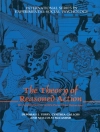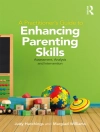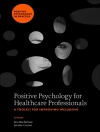A definitive reference on intra- and inter-group processes across a range of age and cultural contexts
Children from infancy develop attachments to significant others in their immediate social environment, and over time become aware of other groups (e.g. gender, ethnicity, age, classroom, sports) that they do or do not belong to and why. Recent research shows that children’s attitudes, beliefs and behaviours are significantly influenced by these memberships and that the influence increases through childhood. This Handbook delivers the first comprehensive, international reference on this critical topic.
विषयसूची
Notes on Contributors viii
Preface xxi
Part I Social Group Membership: Intergroup Context and Methodological Issues 1
1 Children and Social Groups: A Social Identity Approach 3
Drew Nesdale
2 Ethnic Identity among Immigrant and Minority Youth 23
Maykel Verkuyten and Fenella Fleischmann
3 Intergroup Contact and Ethnic/Racial Identity Development 47
Sheena Mirpuri and Tiffany Yip
4 Researching Children’s Social Groups: Methods and Measures 67
Drew Nesdale, Christia Spears Brown, and Adam Rutland
Part II Group Processes: Social Exclusion, Resource Allocation, and Communication 99
5 The Role of Group Processes in Social Exclusion and Resource Allocation Decisions 101
Melanie Killen, Laura Elenbaas, Michael T. Rizzo, and Adam Rutland
6 Toward a Contextualized Social Developmental Account of Children’s Group‐based Inclusion and Exclusion: The Developmental Model of Subjective Group Dynamics 124
Dominic Abrams, Claire Powell, Sally B. Palmer, and Julie Van de Vyver
7 Communication in Children’s and Adolescents’ Social Groups 144
Patrick J. Leman and Harriet R. Tenenbaum
Part III Social Categorization, Prejudice, and Stereotyping 165
8 Theoretical Perspectives on the Development of Implicit and Explicit Prejudice 167
Frances E. Aboud and Jennifer R. Steele
9 Social Stereotyping and Prejudice in Children: Insights from Novel Group Studies 184
Rebecca S. Bigler and Meagan M. Patterson
10 Implicit Intergroup Bias and the Long Road to Predicting Discrimination 203
Yarrow Dunham
11 The Development of Racial Categorization in Childhood 221
Kristin Pauker, Amanda Williams, and Jennifer R. Steele
Part IV Socialization and Intergroup Discrimination 241
12 Racial Socialization and Racial Discrimination as Intra‐ and Intergroup Processes 243
Diane Hughes, Jessica Harding, Erika Y. Niwa, Juan Del Toro, and Niobe Way
13 Perceptions of Intergroup Discrimination 269
Christia Spears Brown
14 Essentialism and Children’s Reasoning about Race and Ethnicity 292
Stephen M. Quintana, Julia Z. Benjamin, and Patrice Leverett
Part V Groups and Bullying 315
15 Bullying in School and Online Contexts: Social Dominance, Bystander Compliance, and the Emotional Pain of Victims 317
Jaana Juvonen and Hannah L. Schacter
16 Harnessing the Power of the Group to Reduce Bullying and Victimization 333
Amanda L. Duffy and Lindsey Cameron
Part VI Intergroup Contact and Cross‐group Relationships 353
17 Contact Strategies for Improving Intergroup Relations among Youth 355
Linda R. Tropp and Ananthi Al Ramiah
18 Children’s and Adolescents’ Cross‐Ethnic Friendships 373
Philipp Jugert and Allard R. Feddes
19 Interracial Contact among University and School Youth in Post‐apartheid South Africa 393
Colin Tredoux, John Dixon, Kevin Durrheim, and Buhle Zuma
20 Student–Teacher Relationships and Interethnic Relations 416
Jochem Thijs
Part VII Interventions to Improve Relations between Groups 435
21 Using an Intergroup Contact Approach to Improve Gender Relationships: A Case Study of a Classroom‐based Intervention 437
Carol Lynn Martin, Richard A. Fabes, Laura D. Hanish, Bridget Gaertner, Cindy Faith Miller, Stacie Foster, and Kimberly A. Updegraff
22 Intergroup Contact in Action: Using Intergroup Contact Interventions to Change Children’s Out‐Group Orientation 455
Lindsey Cameron and Nicola Abbott
23 Seeding Change: Using Children’s Media to Promote Social Inclusion the Sesame Street Way 472
Charlotte F. Cole and Lilith Dollard
Part VIII Commentary 487
24 Intergroup Processes in Children and Adolescents: Where Are They Heading? 489
Kevin Durkin
Index 507
लेखक के बारे में
Adam Rutland is Professor of Psychology at Goldsmiths, University of London, UK. He was previously Professor of Developmental Psychology in the Child Development Unit and Centre for the Study of Group Processes at the University of Kent. His research examines the development of children’s prejudice and social identities. He is the co-author of Children and Social Exclusion (Wiley, 2011).
Drew Nesdale is Emeritus Professor in the School of Applied Psychology, Griffith University, Australia. He was previously Head of the School of Psychology at the University of Western Australia. His research explores issues in social and developmental psychology including aggression and violence, intergroup prejudice and bullying. He has published three books and more than 100 papers.
Christia Spears Brown is Associate Professor of Developmental Psychology at the University of Kentucky, USA. Her research, as part of the Children at Risk Research Center, examines children who are at academic, psychological and social risk because of social inequality. Her work on the impact of gender stereotypes on children and adolescents has been published widely.












